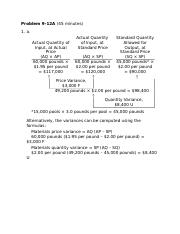Content

If you consume a glass of wine with a large meal, the chances are your blood alcohol content will be lower than if you had consumed the same amount of wine on an empty stomach. Body fat percentage plays a part in determining how quickly alcohol is absorbed into the system. Fat cells do not absorb alcohol as easily as other cells, slowing the metabolizing process. Since women typically carry less water weight and on average have higher Body Fat and BAC Readings body fat percentages, alcohol remains in women’s’ bloodstreams for longer periods of time than men. In dealing with a charge of violating Vehicle Code section 23152, driving with 0.08% blood-alcohol concentration or more, the amount of alcohol in the blood at the time of driving is the only issue. Where, however, the DUI charge is violation of Vehicle Code Section , the amount of alcohol in the blood is of only secondary interest.
This is because women are usually smaller, have more body fat and have lower total body water content than men. Also, a woman’s ability to metabolize alcohol can be affected by her menstrual cycle due to higher levels of estrogen.
Biochemical Mechanisms of Fatty Liver and Bioactive Foods
If your BAC reaches 0.25 percent, your chances of having a traffic collision are 25 times greater. If you’re typing in a custom alcohol percentage, such as absinthe, remember that the proof of an alcohol is double the percent (e.g. 140 proof alcohol is 70% ABV). The U.S. government has approved several different devices for official use. A breathalyzer must meet certain criteria to gain approval for law enforcement use. A breathalyzer is a device that can measure the amount of alcohol present in the breath. According to the National Highway Traffic Safety Administration, around 32 people die every day from alcohol-related car accidents in the U.S.
The Difference Between BAC and Tolerance Free Consult – Los Angeles DUI Attorney
The Difference Between BAC and Tolerance Free Consult.
Posted: Fri, 11 Nov 2022 21:57:16 GMT [source]
Alcohol is the primary ingredient in alcoholic drinks such as liquor, beer, and wine. When you take any alcoholic drinks, it gets to your bloodstream then to your liver.
Ways to Get the Most From Your BACtrack
Time—waiting it out—is the only way to reduce BAC levels once they are elevated. You cannot drink water or coffee, eat greasy food, or take a cold shower to speed up the metabolism of alcohol. Alcohol can be detected in your blood for up to 12 hours after you consume it. If there is insufficient potassium oxalate, it can also impact the BAC results. Lesser amounts of this compound result in blood clots leading to higher blood alcohol content because of the liquid-to-solid ratio impact. In 1984, a 30-year-old man survived a blood alcohol concentration of 1.5% after vigorous medical intervention that included dialysis and intravenous therapy with fructose.
- Drinking straight alcohol or alcohol mixed with carbonated beverages speeds up absorption.
- Food-induced impairment of gastric emptying may be partially offset by faster absorption of ethanol in the duodenum.
- We hypothesized that the energy derived from alcohol intake has the influence on body weight and fat composition after adjusting for levels of daily physical activity.
- Elevated nonalcoholic options like Surely’s sparkling white wine or sparkling rosé are delicious alternatives that will not only keep your BAC low, but also taste like the real thing.
- In certain cases, alcohol poisoning can even lead to long-term brain damage.
Verywell Mind content is rigorously reviewed by a team of qualified and experienced fact checkers. Fact checkers review articles for factual accuracy, relevance, and timeliness. We rely on the most current and reputable sources, which are cited in the text and listed at the bottom of each article.
How Alcohol Can Affect Your Body Composition
More important, a level of .15 percent can have wildly different effects on the nervous systems of different individuals and hence on their ability to safely operate motor vehicles. Generally, the less you weigh, the more alcohol will affect you. Someone who is tall and heavy can consume far more alcohol while maintaining a .08 or lower BAC than someone who is smaller and weighs less. For this reason, tuning into your own personal anatomy is critical. It’s also true that the more fat a person’s body composition contains, the more susceptible they will be to intoxication. It is very important for this reason not to compare yourself to others when drinking or try to keep pace with anyone else. While blood alcohol concentration can vary, there are expected effects based on your BAC and body weight.
This evidence can be circumstantial, such as swerving driving, which suggests the driver is under the influence and impaired, or the smell of marijuana or alcohol. Impairment can also be shown by a driver’s performance on roadside Field Sobriety Tests.
Every state uses a blood alcohol content measurement, or BAC, to determine whether an individual is driving under the influence, or driving while intoxicated. Blood alcohol content measures the amount of alcohol in a person’s system by detecting the weight of alcohol in the blood. When we consume alcohol, it is absorbed through the stomach lining into the small intestine and transported into the bloodstream. Blood travels throughout the system, quickly being absorbed throughout the human body. Some estimates indicate that blood alcohol content can be measured accurately anywhere from 30 minutes to 70 minutes after a person consumes a drink. Alcohol absorption is affected by the food you have ingested and the type of drink. When food is eaten along with alcohol, the alcohol absorption is a lot slower and the blood alcohol concentration peak is generally achieved anywhere between an hour to six.

Otherwise the limit is 0.08%, except in Utah, where it is 0.05%. Japan—drivers under the age of 20 because of not reaching legal drinking age. The examples above define a standard drink as 0.6 fluid ounces (14 g or 17.7 mL) of ethanol, whereas other definitions exist, for example 10 grams of ethanol. Tylenol https://online-accounting.net/ – mixing Tylenol with alcohol is extremely dangerous because Tylenol by itself can cause liver failure. A person should therefore never consume Tylenol prior to or after consuming alcohol. Moderate alcohol consumption can improve insulin sensitivity, although the mechanism behind this is still unclear.